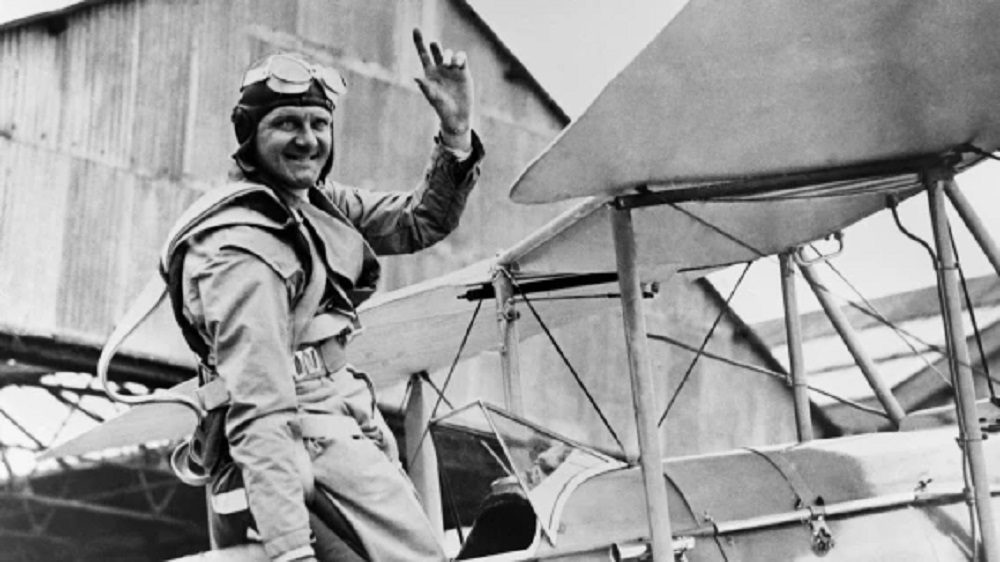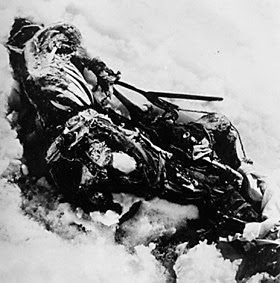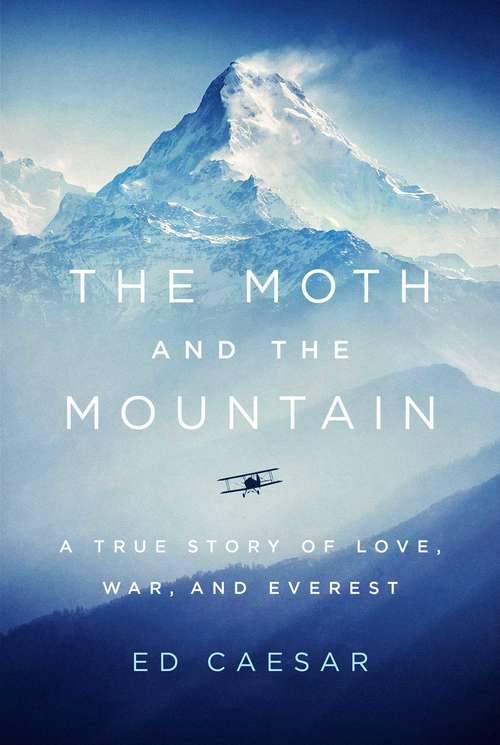In 1934 a Pilot Wanted to Crash-Land on Everest and Climb It
Maurice Wilson flew illegally and then, with no experience or training, tried to solo the world's highest peak five decades before anyone succeeded

There were some bold attempts to climb Mount Everest before the first ascent in 1953, but none might be so crazy as the one by Maurice Wilson in 1934. The British soldier and aviator had never climbed before, but made a plan to learn how to fly, crash-land a plane near the top of Everest and then climb to the summit.
During WWI, Wilson was injured from gun fire but refused a pension from the military. His wounds never fully healed. After learning about George Mallory and Andrew Irvine’s failed Everest attempt in 1924, Wilson was inspired to try himself. He believed that faith and prayer would enable him to succeed. He described climbing Everest as “the job I’ve been given to do.”
No climber had ever tried to solo Everest and it wouldn’t be accomplished until 1980, and making a solo flight halfway around the world was only done by the best pilots at the time. Despite not knowing anything about mountaineering or flying, he bought a de Havilland DH.60 Moth, which he named Ever Wrest. His instructor told him that he’d never reach India, but Wilson said he’d make it or die trying.
He had no technical climbing training or equipment and had never climbed a mountain, but set off anyway. At the time, little was known about the dangers of climbing in the Himalayas, as reports often left out details about avalanche slopes and crevasses.

The Flight
After surviving an accidental crash in his plane, his departure date was delayed. By this time, the Air Ministry and press had caught word about his plan. The Ministry banned him from flying, but he illegally left on May 21 and landed in Cairo. He was not allowed to fly over Persia, so landed in Bahrain, where officials there ordered him back to England. After taking off, he flew to Gwadar in western India, which was beyond the flight range of his plane, but he somehow made it anyway. He continued to Lalbalu where authorities impounded his plane.
The Walk
Wilson was denied entry into Tibet, so spent the winter in Darjeeling. While fasting, he randomly met three Sherpas: Tewang, Rinzing and Tsering. They had all worked for Hugh Ruttledge on a 1933 Everest attempt, and agreed to accompany Wilson. On the first day of spring in 1934, Wilson, Tewang, Rinzing and Tsering left disguised as Buddhist monks. They reached the Rongbuk Monastery on in mid-Aprl, after 21 days of travel. They were welcomed and given equipment left behind by Ruttledge’s expedition. Wilson stayed for two days before leaving for Everest alone.
The Climb
The Rongbuk Glacier was his the first time he’d been on ice. He found it difficult, and despite finding crampons didn’t use them. After nearly a week in bad weather, he turned around. In his diary, he wrote, “It’s the weather that’s beaten me – what damned bad luck.” He returned to the monastery snow blind, in pain and with an injured ankle. After 18 days, he left again on May 12 joined by Tewand and Rinzing. They reached camp three below the north col. In his diary, he said, “Not taking short cut to Camp V as at first intended as should have to cut my own road up the ice and that’s no good when there is already a hand rope and steps (if still there) to Camp IV.” For four days, he climbed slowly up to 6,900 metres. On May 29, he wrote, “This will be a last effort, and I feel successful.” Then on May 31, he wrote, “Off again, gorgeous day.” Days went by without a sign of him, so Tewand and Rinzing left the mountain and shared the news of his death.
Body Found
In 1935, Eric Shipton found Wilson’s body at the foot of the north col, lying on its side in the snow. Wilson’s tent had been torn apart by the wind and storms. Shipton found a pack with Wilson’s diary. Shipton and his team buried Wilson in a crevasse. It’s assumed that Wilson died of exhaustion or starvation, but it’s unknown when.

Did Wilson Summit?
In 2003, Thomas Noy proposed that Wilson could have reached the summit and died on his descent. In 1960, a Tibetan climber named Gombu said he found the remains of a tent at 8,500 metres, which shouldn’t have been there. Noy said it could have been left by Wilson. Expert Himalayan climber Chris Bonington has said, “I think you can say with absolute certainty that Wilson would have had no chance whatsoever.” And climbing historian Jochen Hemmleb and Wilson’s biographer, Peter Meier-Hüsing, suggested Gombu was mistaken about the altitude of the tent. However, it may never be known for sure just how high Wilson got.
Soviet Expedition
It has also been suggested that if there was a tent at 8,500 metres, then it might have been a relic of the rumoured Soviet expedition of 1952. The alleged expedition, apparently led by Pavel Datschnolian, was rumoured to have failed and led to the death of Datschnolian and five other climbers. Russian and Chinese authorities have denied that such an attempt took place, and no physical evidence has ever been found, nor is there any record of a person named Pavel Datschnolian.
Books
Wilson’s expedition has been covered in several books, including one in 1957 by Dennis Roberts called I’ll Climb Everest Alone, which was reprinted in paperback by Faber in 2011. It was also mentioned in Tony Astill’s Mount Everest The Reconnaissance 1935, and in Walt Unsworth’s book Everest. In 2020, Ed Caesar wrote about Wilson in The Moth and The Mountain: A True Story of Love, War and Everest.



